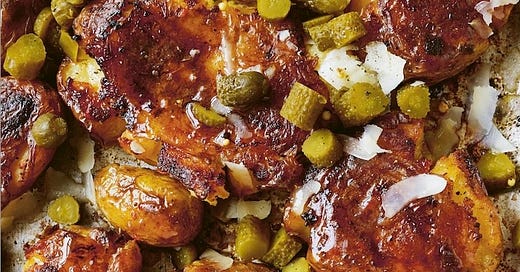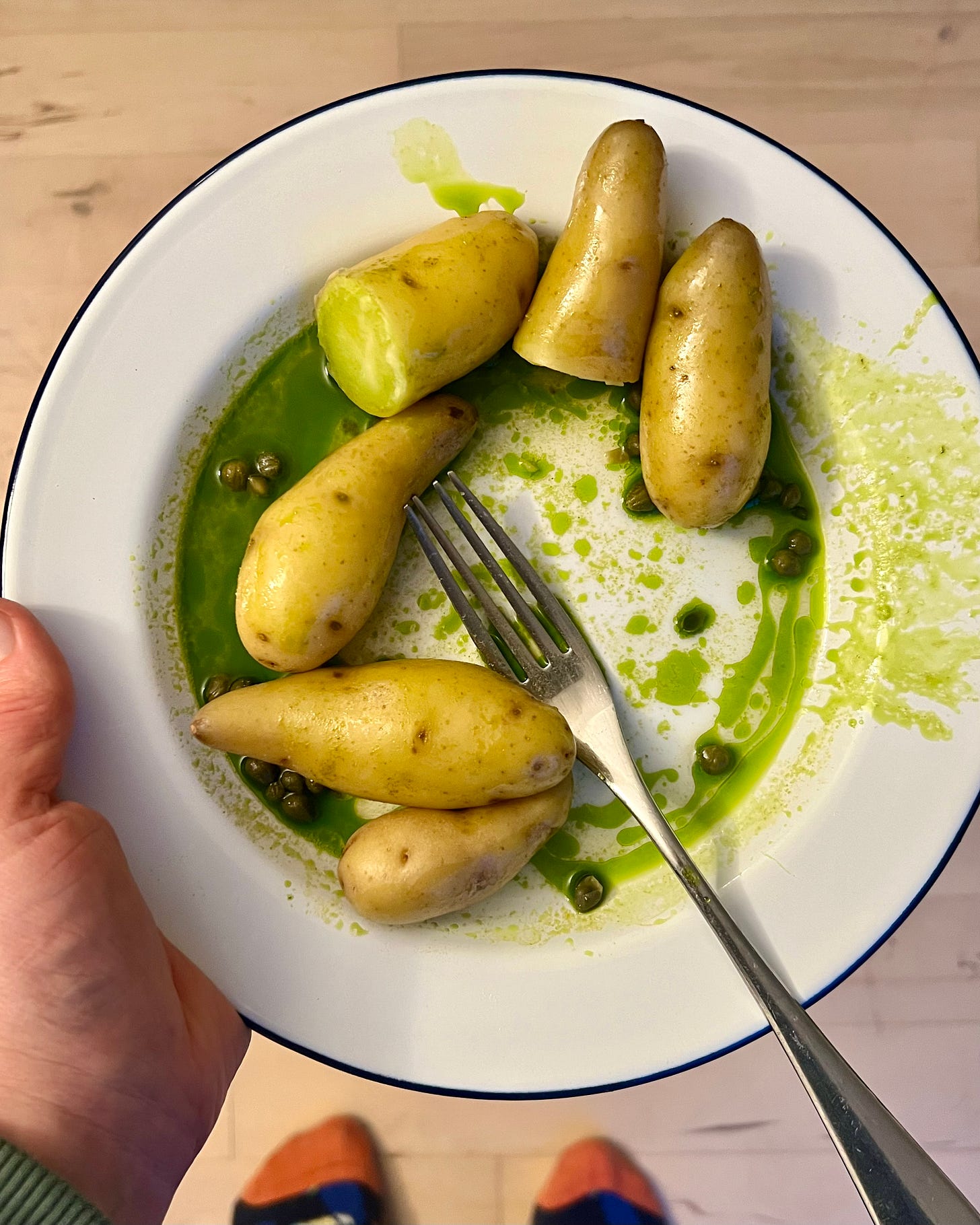On The Side #2 | Baby Potatoes
'new', 'baby', 'mini' ... whatever you call them, they're a super side
Probably as a hangover from writing a book of side dishes (and thus ruminating too long over carbs that are excellent but not obvious), I am frequently guilty of overlooking the potato. My wife hates me for it (one of many legitimate gripes tbh), and no longer even bothers to offer a poker face in response to the gourmet items I bring to the table. Apparently most would be better if they’d started life as a spud.
She has a point: what a versatile, nutritious, adaptable, embellish-able, and deceptively delicious-in-it’s-own-right vegetable this is. Albeit too versatile and adaptable for a feature of this length and nature; it needs a book, really.
Indeed I wasn't going to turn to the potato quite so soon. However, last week I spied, cooked and ate some outstanding baby potatoes from Anna Jones’ latest cookbook Easy Wins, and was reminded not only that my my wife is right (about us needing to eat more potatoes), but also that ‘new’ or ‘baby’ potatoes would be a good subset to get stuck into. So here we go.
Anna’s squashed and roasted cheese and pickle baby potatoes — the recipe that sparked this column — is included (with permission!) in a set of 4 (four!) ideas below.
Top image credit: Matt Russell
This week’s recipes
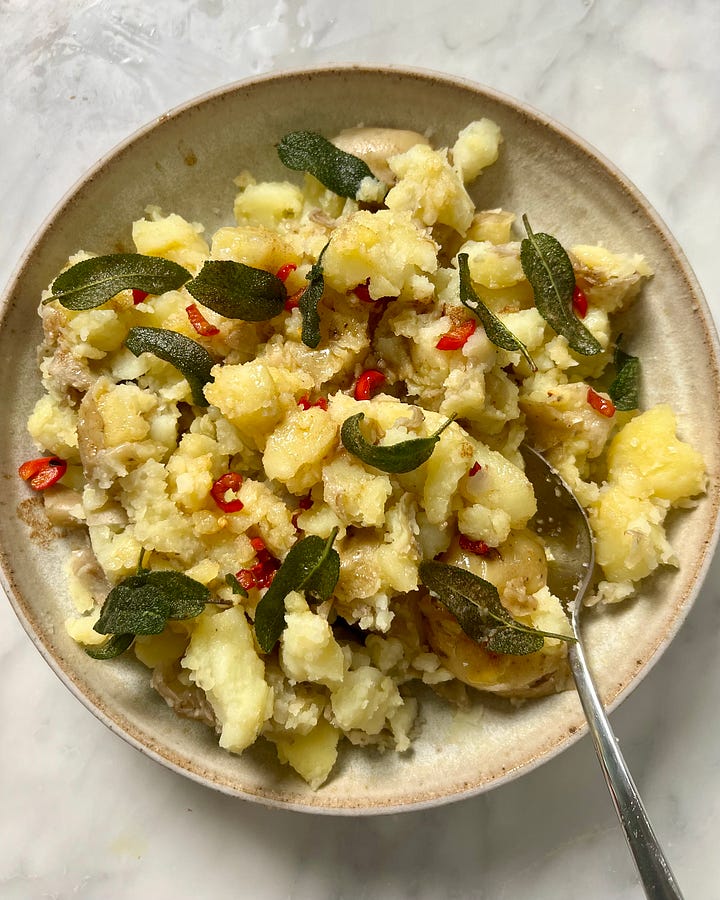
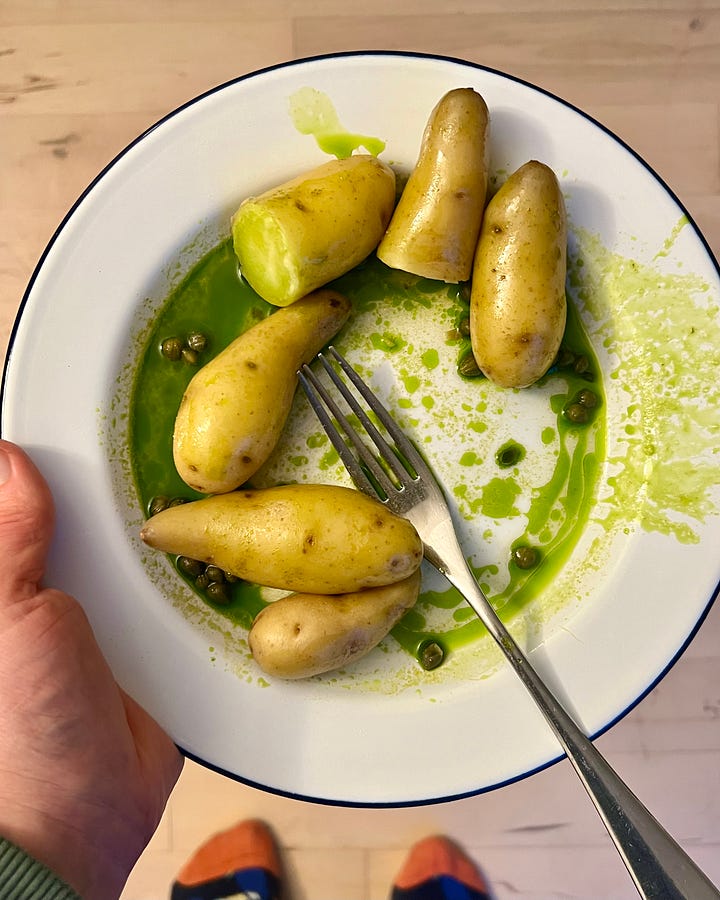
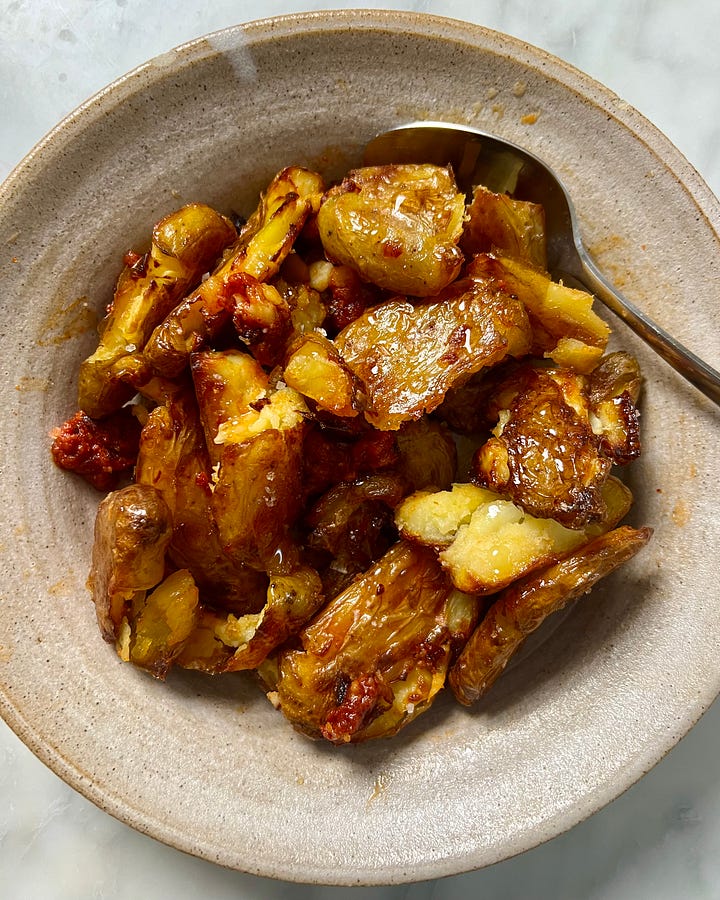
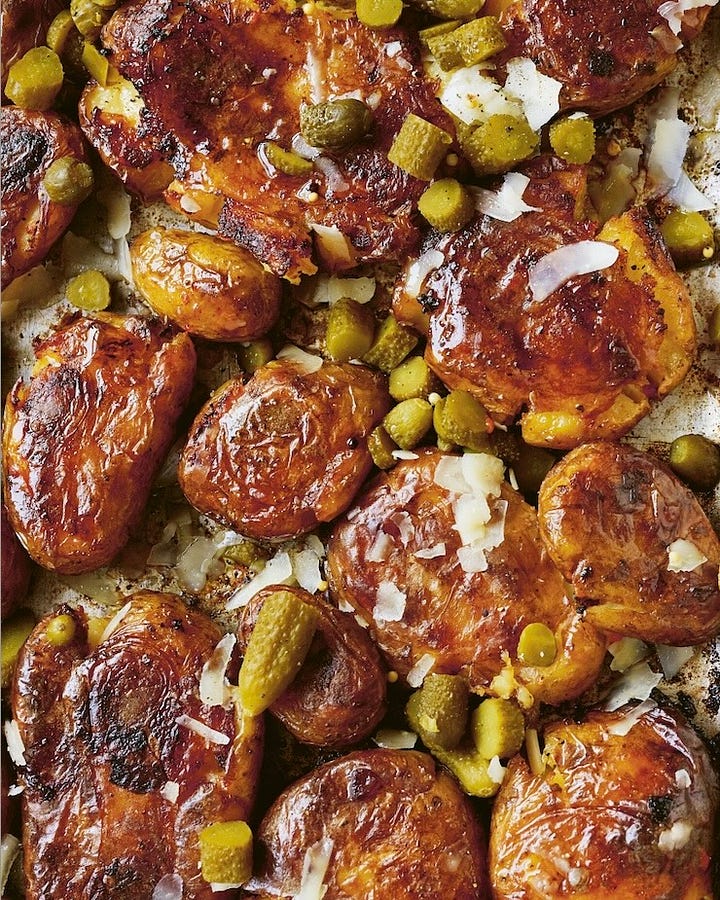
Potato possibilities are infinite. It’s almost paralysing (and then so easy to just do the same thing again and again).
So to help narrow the options, I’ve set out below some thoughts and advice on cooking baby potatoes. There are also recipes and videos detailing 4 excellent embellishments. None of the recipes go much beyond sprinkling, drizzling or stirring-through, yet the tiny extra effort is worth it.
Brown butter, sage and chilli crushed baby potatoes
Boiled baby potatoes with salsa verde oil, capers and lemon
Crispy squashed sobrasada and hot honey baby potatoes
Cheese and pickle baby potatoes (extracted from Anna Jones’s super new book Easy Wins (4th Estate; image by Matt Russell)
Subscribers see all posts without restriction (multiple extra recipes and the bonus mid-month ‘Supplemental+); are able to look back at posts in the archive and enter competitions; and generally support and enable the newsletter and recipes to exist (THANK YOU).
Same same but occasionally different
‘Baby’, ‘Mini’, ‘Micro’ … are words splashed on bags of potatoes in UK Supermarkets as a description of what are classically known as ‘new’ potatoes. These are small potatoes (c.3cm-6cm) that have been harvested before they reach maturity. And this means that their taste is relatively sweet and skin is thin. Also: no hairs on their chest.
In some cases new/baby potatoes are literally just small versions of the potatoes they would have grown to become. Most shops sell, for example, baby Charlotte potatoes (the classic waxy salad potato) and Desirees (the red skinned allrounder). There are also loads of other cultivars that are generally only sold as new potatoes.
If you look closely you’ll see names like Vivaldi, Accent, Jazzy and Casablanca. And I started writing this feature with the aim of suggesting which of them are best for which method of cooking. But then realised that although some definitely roast a little better than others, and others are slightly better when crushed or seem ideal for boiling … it’s just not a very practical way to approach it. Not least because those names are in the small print, choice isn’t always there and, ultimately, if one stops nitpicking, they are all fine at most things.
That said, a handful of small potato varieties are often singled out and relatively easy to get hold of when in season (in the UK at least):
Some notable small spuds:`
Jersey Royals — the prince of new potatoes are only grown on the island of Jersey and have PDO designation. Nutty, sweet and thin skinned, you do see recipes suggesting that they’re roasted or baked or generally messed around with. But really they’re perfect just boiled, then dressed with salt, pepper, butter, perhaps a hint of fresh mint. End of March-July.
Pink Fir Apples — long, knobbly potato. Waxy and creamy and have, relative to other small potatoes, a fairly thick skin — which is particularly good baked or roast.
Anya — a variety developed for the supermarket brand Sainsbury’s, and a cross between a Pink Fir and Desiree potato. So there’s the knobbly, enjoyably thick skin of the pink fir, but also the all rounder qualities (not fully waxy nor fully flour) of a Desiree.
La Ratte — curvy, knobbly and long, these are quite buttery to taste and (to my mind) slightly more floury than they are waxy. Great when boiled and crushed, or par-boiled, squashed and roast. See the recipes below!


